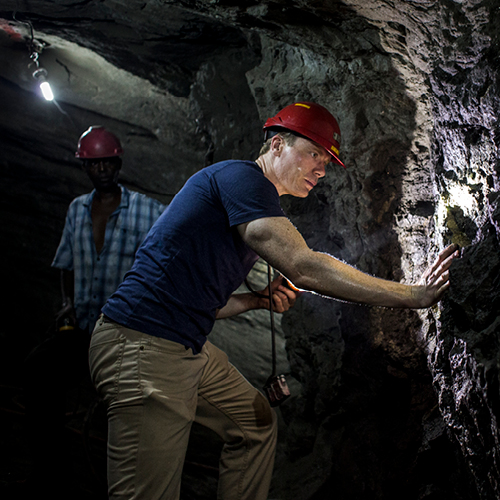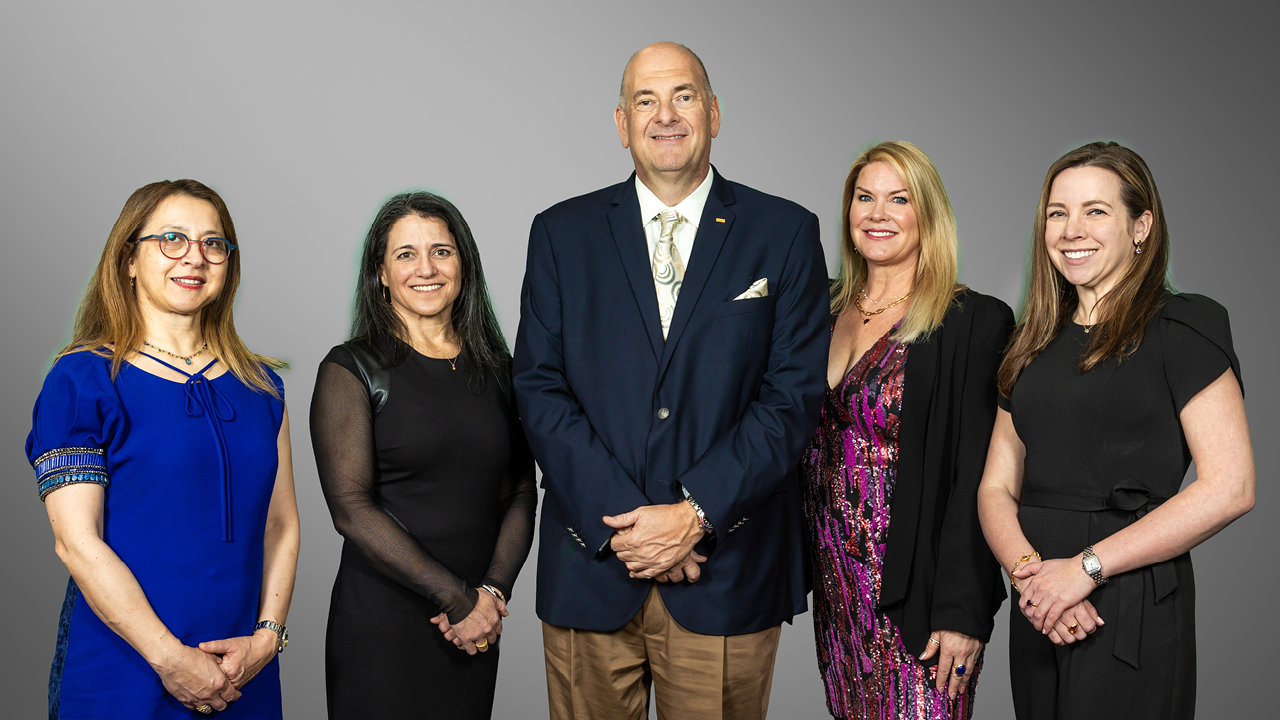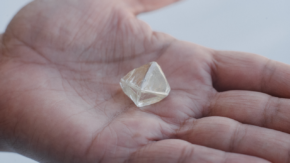With the issue of traceability top of mind, John Ford is embarking on an unusual partnership — one he hopes will go some way toward tackling what he sees as the biggest challenge in the colored-gemstone industry right now: communication. The collaboration is between the American Gem Trade Association (AGTA), of which Ford became CEO in August, and the Colorado School of Mines, a public research university that focuses on science and engineering and has its own working mine.
The aim? To create a study of best practices in colored-stone mining that will serve as both an academic tool and a set of traceability guidelines for the jewelry industry.
“The goal is to improve transparency and traceability of the colored-gemstone supply chain, and that benefits everyone,” says Ford, whose mission as CEO is to reestablish AGTA as a leader in the trade.

Image: Bruce Bridges of Bridges Tsavorite examines a reef in the Bonanza Tunnel of Tanzania’s Scorpion mine. (Bridges Tsavorite)
So when the Colorado School of Mines pitched him the idea of funding the study, he saw its wider potential for the industry. “Doing a study of the colored-stone supply chain is not an easy thing to do,” he admits, but he believes it’s an important and underdeveloped area of interest. “A lot of the research that’s been done has to do with diamonds and precious metals.”
The project corresponds with AGTA’s own ethical standards related to traceability, which require its members to adhere to local and global laws for sourcing and importing gems.
“AGTA was the first organization to write a gemstone-enhancement manual and a code of ethics, which have been copied by organizations — with our free blessing — around the world,” Ford explains. “As time has gone by, and as the world has changed, the next logical step for us is to do this traceability study, because it works in tandem with what we’ve been about for 40 years.”
We’re not there to criticize anybody…. We’re there to observe and to come back
with best practices.
Building an accurate picture
Leading the multiyear project will be Colorado School of Mines assistant professor of engineering Nicole Smith and PhD student Jenna White, who has spent 16 years working in corporate social responsibility (CSR). The pair will build a picture of the industry by putting their boots on the ground in a number of locations, starting in April with site visits to Kenya, Madagascar, Tanzania and Sri Lanka. South America will likely follow in future years.
The aim is to study the mining of at least 10 different colored gems. Ford is keen to point out that these expeditions are not about deciding what is right and what is wrong; opinions are often mixed as to what constitutes ethical practices in the artisanal mining sector that dominates colored gemstones.
“We’re not there to criticize anybody or tell somebody what they should or shouldn’t do,” he says. Rather, “we’re there to observe and to come back with best practices.”
Having the study led by a university rather than a corporate entity with commercial interests should help to create a clear, unbiased picture that can help the trade cut through any greenwashing, Ford believes.
“The industry needs people going overseas that don’t necessarily have a conflict of interest, who don’t buy gems, because they’re going to look at things independently, and this is how you get good data.”
While the Colorado School of Mines knows the project’s goals, he says, it will “actually do the research. We don’t know what the research is going to be. We don’t know what the best practices are going to be. And I’m most excited about that.”
Journals and jewelry
Regardless of the study’s outcome, the takeaway that Ford would like is information he can share with AGTA members and the wider industry. The Colorado School of Mines will be releasing a minimum of two academic studies and looking to publish its research in respected journals. AGTA, meanwhile, intends to create best-practice white papers in a user-friendly format for those working in the jewelry trade.
The research will also be the basis of articles within AGTA’s Prism magazine, as well as presentations at its GemFair trade shows in Arizona, Nevada and Colorado. The team expects to start feeding back discoveries from its research in early 2024.
“We want to make sure that we are developing clear transparency and traceability best practices for the colored-gemstone industry,” says Ford. “So you have some different groups: You have us on one end, and you have an academic on the other. Maybe this is kind of an unusual strategic relationship, but we’re both going to accomplish our goals as [an] industry and as researchers, and [will] both benefit greatly from it. The most important thing in the end is, the more information we give to consumers to make choices on what they’re spending their money on, the more they can buy with confidence, and the better we are as an industry.”
This article is from the May-June 2023 issue of Rapaport Magazine. View other articles here.
Main image: Professor Sebnem Duzgun of the Colorado School of Mines, assistant professor Nicole Smith, AGTA CEO John Ford, AGTA board president Kimberly Collins, and PhD student Jenna White. (American Gem Trade Association)



